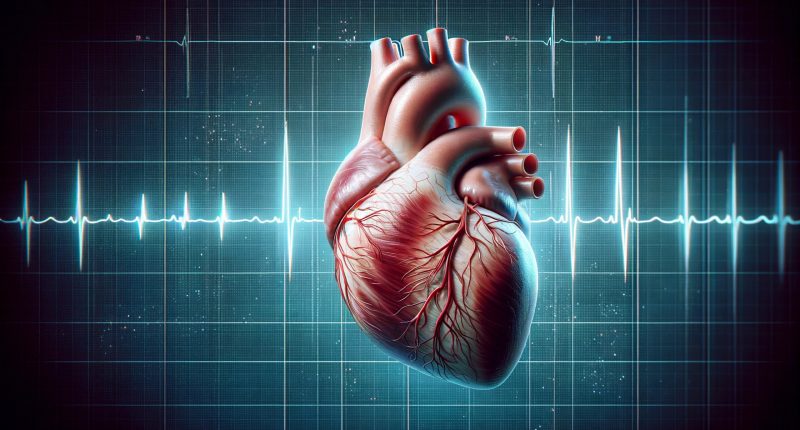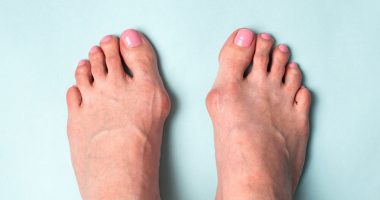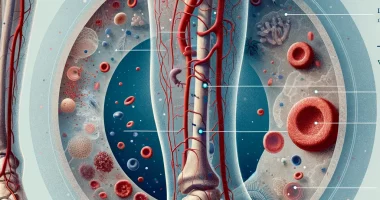Atrioventricular block
What is it?
The atrioventricular block is a pathology of the heart rhythm that occurs when there is a break in the electrical impulse from the atria to the ventricles. The highest risk group for the development of this disease includes the elderly, although patients with this type of abnormality in the work of the heart include young men and women, and even children. The pathological process may be asymptomatic or accompanied by severe symptoms. Usually, such abnormalities in the functioning of the heart quickly lead to a violation of the blood supply and heart rhythm.
Disease
Usually, the formation of the heartbeat originates in the sinus node of the atrium and passes through the atrioventricular node (AV node), which is part of the heart’s conducting system. Here, it slows down and is re-involved in the bundle of His and its fascicles in the left and right ventricles. It makes it possible to pump blood from the ventricles to the atria. This mechanism allows the maintenance of stable circulatory dynamics. Blood moves smoothly through the blood vessels, providing all body parts with oxygen.
If the signal does not pass through the AV node for any reason, an atrioventricular block occurs, which slows or completely stops the movement of the electrical pulse. The development of the pathological process is based on damage to the conducting system: the atrioventricular node itself, the bundle, or the fascicles of the His. The ventricles try to prevent, stop, and activate their own mechanisms supporting the pulse, significantly reducing the heart rate. It is reflected in the appearance of the characteristic symptoms of the person.
Types of atrioventricular block
First, when diagnosing and choosing treatment tactics, AV blocks are divided into congenital and acquired. Depending on the level at which the pulse conduction disorder develops, there are three types:
- proximal; pulse conduction is disrupted in the atrium, AV nodes, and trunk of the His bundle;
- distal; conduction disturbance occurs at the level of the fascicle of the His;
- combined; there are multiple levels of infringements.
In addition to the classification of atrioventricular block, they are divided into three forms, depending on the duration of development:
- acute; occurs with an overdose of medicines or a heart attack;
- intermittent; may be an ischaemic condition with transient heart failure;
- chronic (recurrent).
Heart blocks are also divided into two broad categories: incomplete and complete. The doctor will see any changes in the heart muscle on the heart curve. According to the ECG criteria (frequency, slow or complete absence of pulse conduction), there are three degrees of AV block.
- 1st degree AV block. Conduction through the atrioventricular node is slowed, but all impulses reach the ventricles. There are no clinical signs. On the ECG, the P-Q interval, which allows us to estimate the pulse transmission time from the sinus node to the contracting fibers of the ventricles, is longer than 0.20 seconds.
- 2nd degree AV block. Not all impulses reach the ventricles. The heart waveform shows periodic loss of ventricular complexes (a pause between ventricular contractions). Second degree AV block is, in turn, divided into two types:
- Mobitz I – P-Q interval lengthens gradually, and after a break and loss of the chamber complex, conductivity is restored;
- Mobitz II – suddenly, without the first increasing delay, the pulse transmission is interrupted.
- Complete 3rd degree atrioventricular block. The passage of impulses stops completely. Atrial contraction is maintained under the influence of the sinus node, and the ventricles contract according to their own rhythm up to 40 times per minute. It is not enough to maintain normal blood flow.
Symptoms of atrioventricular block
The manifestations of atrioventricular node block depend on the pathology type and the pulse conduction level at which the disorder occurred. Incomplete blockade of the I and II degrees most often occurs without pronounced symptoms. Although sometimes, especially when there is physical or psychoemotional stress, a person may feel some changes in their state of health:
- fatigue;
- dizziness;
- weakness;
- short-term slowing of the pulse.
These signs are usually ignored, and patients do not rush to the doctor, meanwhile the pathological process progresses. The clinical picture of a grade III AV block becomes much distinct. A person develops specific symptoms of cardiac pathology:
- dizziness;
- pain behind the sternum;
- severe shortness of breath;
- severe weakness, drowsiness;
- low blood pressure;
- an unexpected slowing of the heart rate (less than 60 beats per minute);
- skin cyanosis on the face within nasolabial triangle.
With a complete AV failure, the situation becomes critical. The patient has the following symptoms:
- fainting;
- confusion, unconsciousness;
- convulsive syndrome;
- coordination disorders.
Many patients find that as their condition deteriorates, they feel the interruptions in their heart rate.
Causes
People of all age categories are susceptible to the appearance of AV block, and the incidence of this pathology increases with age. Causes of congenital conduction disorders include:
- autoimmune diseases of the mother; antibodies that appear in the blood can penetrate the placenta and damage the fetus’ cardiac conduction system;
- intrauterine infection with cytomegalovirus, coxsackie, or rubella viruses;
- congenital malformations of the heart muscle.
Experts highlight the following causes of acquired pathology:
- poisoning with psychoactive substances;
- diseases of the autonomic nervous system;
- electrolyte imbalance;
- physical fatigue;
- endocrine diseases;
- drug overdose;
- chest injuries.
- coronary artery disease;
- rheumocarditis;
- heart tumors;
- myocardial infarction;
- myocardiopathy and myocarditis;
- post-myocarditis and post-myocardial infarction, cardiosclerosis;
Sometimes, the cause of an AV outage cannot be determined. In such cases, idiopathic disease is diagnosed.
Diagnostics
After thoroughly analyzing the patient’s complaints and medical history, the doctor will perform a physical examination. Based on the information obtained, a thorough diagnostic assessment is ordered, which may include:
- a clinical blood test;
- ECG;
- Holter monitor;
- electrophysiological study of heart.
If there is a history of cardiological diseases, an additional procedure is performed, such as cardiac ultrasound, CT scan, and MRI scan. To clarify the diagnosis, various functional tests are used.
Treatment of atrioventricular block
In first degree block, specialized treatment is not required. Medical monitoring of the patient’s condition is adequate. Degrees II and III AV blockade must be treated with medication. If there is no result, they resort to surgical intervention.
Conservative treatment AV blockade
For such treatment, a complex group of medicines and sympathomimetics are used, and the patient is always advised to change his lifestyle and diet. In cases of degree II blockade with slow heart function and circulatory disorders, or in cases of acute myocardial infarction, drugs that increase the conduction of impulses from the His bundle are used in therapy. Medical treatment of cardiology diseases is prescribed and performed only by a doctor.
Surgical treatment
In all other situations and without the effect of taking medicines, surgical intervention is necessary. The are several options to treat this condition:
- Pacemaker Implantation: Pacemakers are small, implantable devices that can regulate the heart’s rhythm. They consist of a pulse generator and one or more leads (thin wires) that are threaded into the heart chambers. Pacemakers are highly effective in managing second- and third-degree AV block. The device monitors the heart’s electrical activity and delivers electrical impulses to maintain a regular heartbeat.
- His Bundle Pacing: His bundle pacing is a specialized form of pacing that aims to mimic the heart’s natural conduction system more closely. It involves placing a lead in the His bundle, a part of the heart’s conduction system located just below the atrioventricular node. This technique can improve synchronization between the atria and ventricles and is considered in certain cases of AV block.
- Cardiac Resynchronization Therapy (CRT): CRT is a type of pacing used in individuals with heart failure and AV block. It involves the implantation of a special pacemaker with three leads—one in the right atrium, one in the right ventricle, and one in a coronary vein on the left side of the heart. CRT can improve the coordination of heartbeats and enhance cardiac function.
All these procedures can be treated in more than 550 hospitals worldwide (https://doctor.global/results/diseases/high-grade-atrioventricular-block). For example, you can undergo this surgery in 33 clinics in Germany with approximate treatment cost of $20.8K (https://doctor.global/results/europe/germany/all-cities/all-specializations/procedures/dual-chamber-pacemaker-insertion).
Prevention
Preventive measures are aimed at eliminating and preventing the causes of pathology. Their list includes:
- immediate referral to a cardiologist at the first sign of AV block;
- a balanced diet;
- compliance with work and other administrative requirements;
- the exclusion of smoking and alcohol.
Patients at risk should have routine check-ups with a cardiologist.
Rehabilitation services
After rehabilitation, the fitting of a pacemaker is individualized for each patient. However, there are general recommendations for lifestyle and behavior after surgery:
- take medicines prescribed by your doctor.
- visit to the clinic according to the schedule drawn up by the cardiologist according to the planned schedule of the pacemaker check-up;
- walking;
If there is swelling on the hand, bleeding from the stitch, or fever, immediate medical attention is needed.



